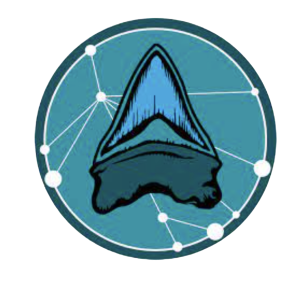Adaptation
The features or characters of an animal or plant that allow it to interact with other coexisting species and its environment
Algorithm
A sequence of specific instructions, typically provided to a computer, to complete a task.
Artificial Intelligence (AI)
A broad term used to describe technology that mimics human intelligence.
Bias (sampling)
The unfair and inaccurate representation of data. Often associated with human bias.
Binomial nomenclature
This is part of the Linnaean system of taxonomy. A species scientific name is the combination of its genus and species names. In scientific writing, the genus and species names are always italicized (for example, Homo sapiens).
Citizen Science
The practice of non-professional people contributing to the process of science by their discoveries or work on a specific project.
Classification
The act of organizing objects or information based on shared characteristics.
Computer Vision
The field of AI that enables computers to derive meaningful information from images, videos, or other visual inputs. In other words, technology that mimics human vision.
Data (Plural; singular “datum”)
Data are information that are used to develop meaning or make decisions.
Database
A large collection of data organized in a structured framework, typically in a computer. Databases make it easier to store, access, and manipulate data.
Extraneous Data
Information that is not relevant to the task being completed.
Fossil
Any evidence of ancient life, such as teeth, bones, shells, leaves, and footprints. Paleontologists typically define ancient as anything older than 10,000 years.
Functional morphology
The branch of ecology that studies the function of a species within its ecosystem based on morphology (shape) of the organism. For example, inferring an animal’s diet based on its tooth shape.
Heterodont
The teeth in an individual (species) have different shapes to serve different functions. For example, humans have molars to crush, canines to grasp, and incisors to cut.
Homodont
All the teeth within the mouth of an individual (species) have the same shape, or nearly so. Many lizards and alligators have homodont teeth.
Hypothesis
A formal scientific statement of an idea or prediction that can be tested by observations or experiments.
Intelligence
The ability to use logic and problem solving to learn and adapt. Intelligence is often associated with perception, learning, memory, reasoning, and problem solving.
Linnaean Taxonomy (system, hierarchy)
The scientific process and system of organizing (classifying) organisms into hierarchical groups (i.e., kingdom, phylum, class, order, family, genus, species) based on evolutionary relationships.
Machine Learning (ML)
The branch of artificial intelligence (AI) in which models are trained to learn from data to make predictions and continue to improve as they are exposed to new data.
Model
A representation of a real object or process. For example, a 3D-printed tooth represents a real tooth. Similarly, a computer vision model represents the process of human vision (visual perception).
Morphology
The study of shape.
Natural Selection
A theory that organisms that are better adapted to their environment will survive to pass on their favorable traits to their descendants. This is an important mechanism in Darwin’s theory of evolution.
Organism
A living thing, species, or group.
Paleontology
The scientific study of fossils. Paleontologists are professionals who do the science of paleontology.
Phenotypic (adj.); phenotype (noun):
The outward expression of an organism’s genotype. e.g., shape, color, size, etc.
Prediction
A statement about what you think will happen in the future.
Qualitative Data
Information based on interpretation or observation that is descriptive in nature. For example, it is hot outside.
Quantitative Data
Information based on numerical values that is either measurable or countable. For example, it is 95 degrees outside.
Sample
A collection of data used to represent a population.
Species
The basic component of biodiversity; those populations of similar individuals that can interbreed with one another and produce fertile offspring.
Spreadsheet
A digital file and program in which data are arranged in the rows and columns of a grid and can be manipulated and used in calculations that are built into the program. Excel is a common spreadsheet program and we used it to construct the fossil tooth database used in these lesson plans.
Taxonomy, taxonomic
The science of organizing (classifying) organisms into groups using morphological (phenotypic), genetic and/or evolutionary characteristics. (See also Linnaean Taxonomy above)
